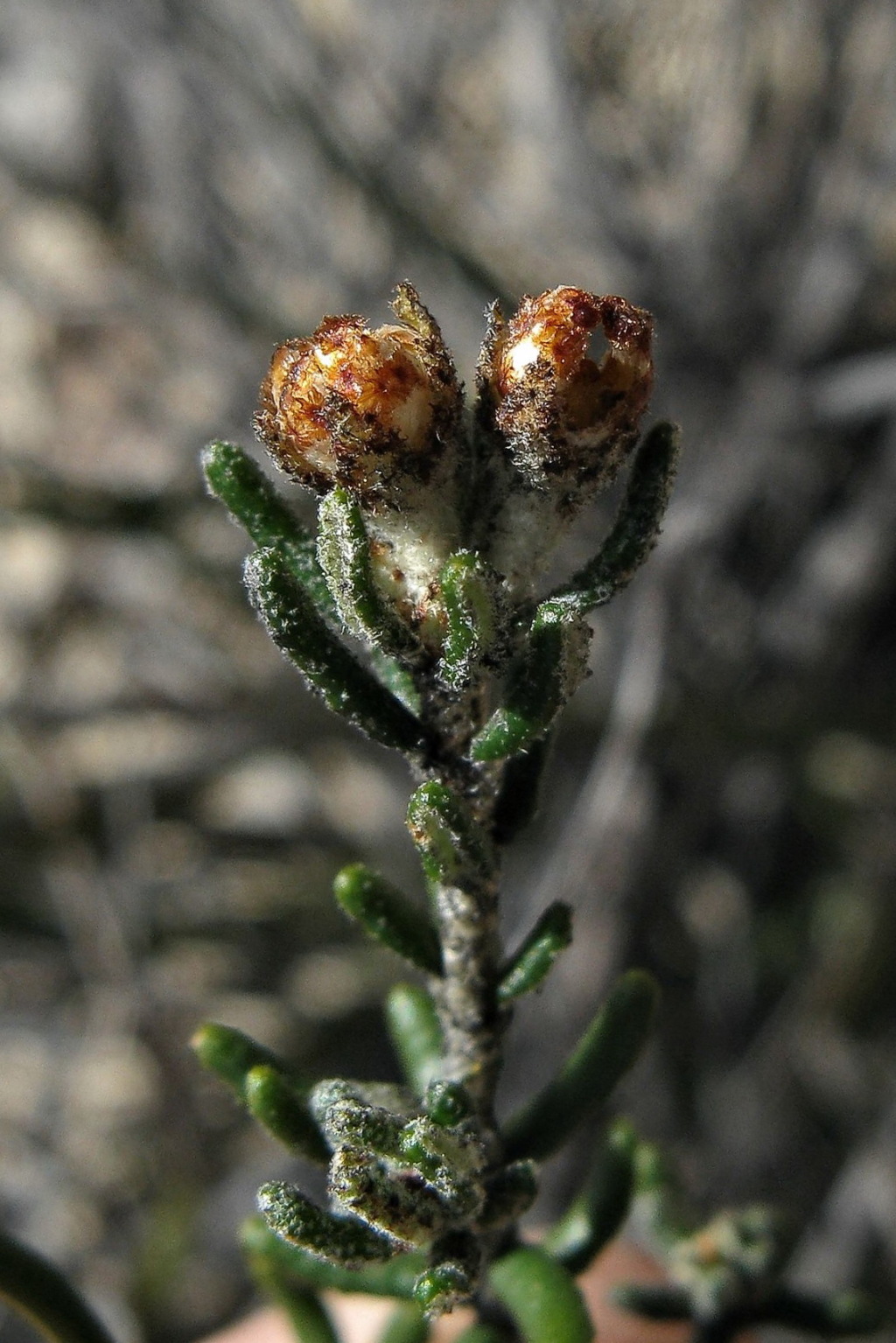Phebalium lowanense
J.H.WillisShrub to 60 cm high; branchlets densely silvery- to ferruginous-lepidote. Leaves spreading, subsessile, linear, 3–10 mm long, c. 1 mm wide, obtuse, upper surface sparsely to moderately stellate-indumented, becoming glabrous with age, midvein not impressed, lower surface lepidote, margins strongly revolute. Inflorescence a terminal, 1–6-flowered umbel-like cluster; peduncle absent; pedicels densely white-lepidote, 3–7 mm long. Calyx broadly obturbinate, 1.5–2 mm long, silvery-lepidote toward base, reddish-brown towards tip; petals imbricate, obovate, 4–5.5 mm long, yellow, silvery or ferruginous-lepidote outside; stamens exserted, anthers yellow; disc not apparent; ovary silvery-lepidote. Flowers winter and spring.
LoM, Wim. Also SA. Confined to the western part of the Big Desert and neighbouring areas of South Australia, and rare throughout its range. Grows in mallee woodland and mallee-heath on sand.
Unlike all other species of Phebalium, the style remains closely coiled with the stigma near the base after the flower has opened. Whether or not this inhibits sexual reproduction is not known.
Duretto, M.F. (1999). Rutaceae. In: Walsh, N.G.; Entwisle, T.J., Flora of Victoria Vol. 4, Cornaceae to Asteraceae, pp. 153–197. Inkata Press, Melbourne.
 Spinning
Spinning

